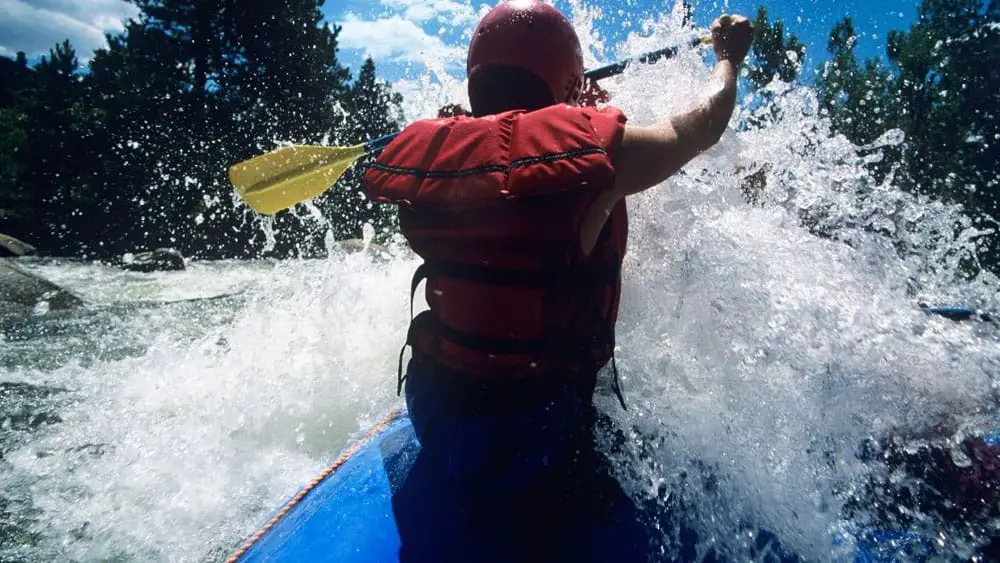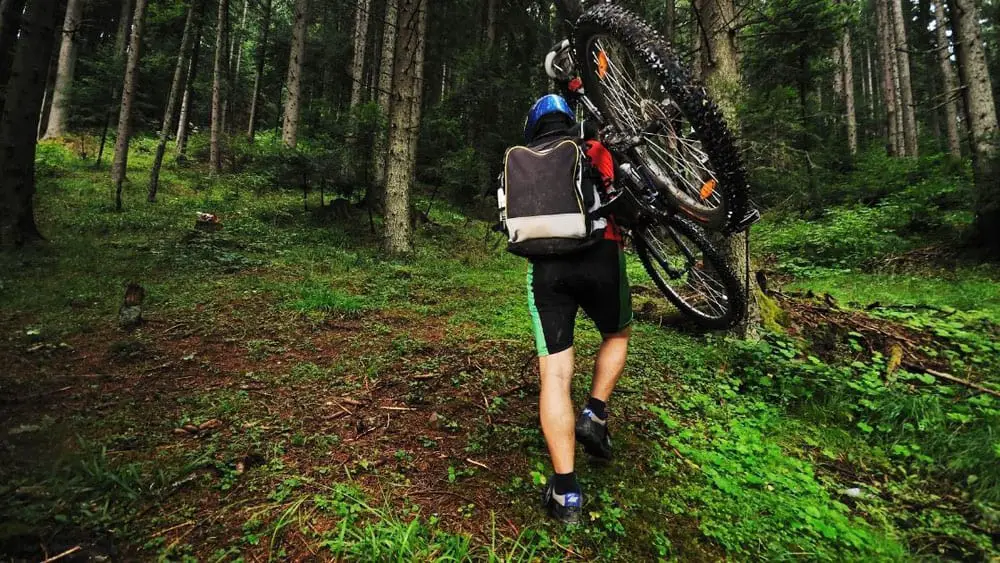
WHAT IS ADVENTURE RACING?
What makes adventure racing different from regular obstacle course races and triathlons is that the participants should not only be physically fit but should also have a good and sound mentality. During the race, individuals will be forced to make use of their decision-making capabilities, navigation skills, time management competency, and teamwork. All this will be put into use especially when the participants are under a state of pressure.
If ever you are thinking of an ultimate race wherein you combine long-distance running, mountain climbing, and nature obstacle course racing, then it is possible that you are thinking of the type of race known as Adventure Racing. Also known as Expedition Racing, it was believed to have first started as an expedition challenge that aims to imitate the kind of conditions faced by adventurers during the age of exploration.
To learn more about adventure racing, continue to scan through the rest of this article as we try to introduce to you the world of adventure racing.
ADVENTURE RACING FORMATS
SPRINT ADVENTURE RACE
Typically organized for beginners as well as enthusiasts who want to try and experience adventure racing. Race duration is typically between two to six hours, enough for participants to encounter the three common legs (running, cycling, and paddling) that are usually present in a full adventure race.
This type of adventure race is normally done for socialization purposes rather than for competition. Though this category of an adventure race can be done solo, most events will accommodate a pair composed of a parent and child, classmates, work colleagues, couple, or friends.
Below shows a sample of a Sprint Adventure Race events:
| Novice (Shorter, Easier) | Classic (Longer, harder) |
| Run – 3 km | Run – 5 km |
| Mountain Bike – 10 km | Mountain Bike – 16 km |
| Kayak – 2 km | Kayak – 3 km |
Reference: http://adventuresprint.com.au/race-information/entry
12 HOUR ADVENTURE RACE
A whole day event usually covering a duration of six to twelve hours. Similar to that of a sprint event but with longer distances at each leg. In this category, a higher preparation is required as well as nutrition should already be considered.
Expect that you will be having your meals as you go on with the race and that lesser stops will be available. Chances are, you will be enduring both hot and cold temperatures as the race will usually extend from morning until night.
24 HOUR ADVENTURE RACE
An adventure race that lasts eighteen to thirty hours and will involve more activities compared to the previous two categories. The average total distance covered in this type of adventure race is about 160 kilometers (100 miles). Commonly joined by beginners to gauge themselves on how their bodies will handle sleep deprivation and hunger while on the go to complete the race.
Organizers will also be more capable as they will be setting up transition points and will be providing transportation for the gears that the participants will use. They should also be able to provide good coordination and arrangements to every participant.
MULTI-DAY ADVENTURE RACE
Multi-day events usually take about two days (thirty-six to forty-eight hours) to complete. Short team rest will be common as well as cut-off times at every transition point will be implemented. It is common that those you participate in this type of adventure race are experienced teams preparing for the higher tier of adventure racing.
Advanced navigation skills will start to be a factor in this category. Teams will also be the ones to dictate their routes towards every checkpoint.
EXPEDITION ADVENTURE RACE
Similar to multi-day races but will take a longer period to finish. Expedition adventure races usually take three to eleven days with teams having to do a variety of activities not limited to the three commonly featured disciplines.
What makes this expedition race unique is that it is mostly joined by a lot of international teams competing for the top rank or in order to qualify for the world adventure race series that is being held yearly.
DISCIPLINES INVOLVED IN ADVENTURE RACING
Similar to triathlons, adventure racing is a multi-discipline sport where individuals or teams will have to go through different legs under different disciplines in order to finish the race. The three most common types of discipline are trail running, mountain biking, and paddling.
Depending on the type of terrain and topography of the area, there might be other added activities that the participants will be doing. Due to this, participants should not just focus on those three common disciplines and should also be open to explore other sport disciplines. Normally the race organizers will provide that activities the participants will be experiencing at the event website. This is usually posted months before the event is scheduled.
It is expected that participants will have the ability and experience to perform the activities that are set in the race and below are some of the disciplines commonly encountered.

PADDLING
Assumed by most beginners to be the easiest part of the race, paddling activities, in reality, should never be taken lightly. Proper stroke and good upper body strength are needed to be developed. But once developed, together with good teamwork and coordination, any team can easily overtake the other leading teams. Also, without proper synchronization and good boat control, even the best teams can lag heavily, or worse may face injuries and accidents.
Compared to the other disciplines, this where most participants do not have much any experience on. Some might not have even held a paddle, only to do so when they decided to start training for their first adventure race.
Here are sample activities that falls under the this discipline:
- Kayaking
- Canoeing
- White river rafting
TREKKING
One of the most exciting but also the most exhausting and dangerous part of the race. It is during the trekking leg where most teams will make use of their navigation or orientation skills. With only a map and a compass provided, participants will have to traverse a whole mountain region just to reach a particular checkpoint. At this time, participants will have to find the shortest but also the most accessible route. This is with only a limited resource and knowledge of the area.
The unique thing about this challenge is that the participants are not allowed to use GPS and that no routes or trails are available for participants to follow going towards their designated destination. Everyone must create their own path.
In case an individual or a team gets lost, the organizers will not provide assistance. It is only when the final cut off time is nearing that organizers will assist these participants, usually leading them to the shortest possible route, in order for them to reach the designated checkpoint.
Below are some of the activities that participants will be expecting under this discipline:
- Mountain Traverse
- Rock Climbing
- Rappelling
- Cave Spelunking
CYCLING
Be it uphill or downhill, mountain biking to some is the most awaited leg in every adventure race. This is usually the longest leg in terms of distance covered for most adventure races. Cycling activities vary depending on the type of terrain, the most common is trail mountain biking where participants must traverse steep and rugged slopes until they reach their target destination.
What makes it preferred by most is due to the possibility of being able to help other teammates. The stronger team members can easily aid weaker members by towing-in their teammate’s bike as they go on with the course. It is also an event that can easily re-orient a team member’s physical condition which in turn can re-synchronize the team’s order.
Below are some of the common terrains that can be experienced by participants during an adventure race:
- Dirt and Gravel Paths
- Mountain Trail (Uphill and Downhill)
- Road (Concrete and Asphalt)
TRANSITIONING
Usually overlooked, the transition phase from one leg to another is actually a kind of discipline on its own. It is one of those things that every participant should also spend their time perfecting when they are doing their training and preparation. A smooth and speedy transition can lead to an opportunity for one team to overtake other teams.
It is during this transition phase that participants or teams can dispose of previously used gears that are no longer necessary in the up-coming legs. Teams can also take and prepare the gears essential for the next stage of the race like their mountain bikes, headgear, and even their own paddles.
This is also the time when teams will supply themselves with food and hydration.
IMPORTANT KNOWLEDGE AND SKILLS NEEDED IN AN ADVENTURE RACE

TRAIL CYCLING
Knowing how to ride a bike is not enough when you want to join an adventure race. Contrary to what most people expect, trail cycling or mountain biking is something that will take a lot of time and effort to master.
Riding a bike on a concrete pavement is very different from riding it on a rugged terrain. You will learn that the control and handling of a bike is much harder on a trail than on a normal street. What usually works best on an asphalt road might not work well when doing an uphill ride. Even the speed and operation of the bike should be taken into consideration depending on the terrain you are riding on to.
Taking those into account and practicing on different types of terrain will earn you skills and experience that you yourself won’t be able to realize. Also, make sure to invest in a good mountain bike. Though it may be costly, try to stick to a good brand with a proven record of durability. Additionally, try to go for mountain bikes with a light frame that has full suspension.
BIKE REPAIR AND MAINTENANCE
Trail Cycling and Bike repair are sets of skills that go together hand in hand. The former being applied during the actual race legs while the latter is utilized during leg transitions. Being able to have a full grasp of such skill will be a factor for participants and teams to have a fast and smooth transition. Also, having a good knowledge of bike repair and maintenance is helpful when unfortunate situations happen during the race like when there is an event of a flat tire or a loose chain.
As most gears needed on the next event legs are stored on designated participant boxes, it also the same with the bikes. In order for a participant to maximize his own storage box, the bikes are disassembled and stuffed in the box together with the other stuff. Only during transition will the bike be assembled again by the participant. It should be common knowledge that during this time, participants are expected to assemble their own bikes and that they will also be the ones to return them back again inside the boxes to avoid any tampering or unexpected mishaps.
Do note that during an adventure race, each participant will have to work on their own and that no outside help will be given. The only exception of help being offered is when other participants will offer their help to assist you, which is something that rarely happens unless they are your own teammates.
PADDLING
Paddling is a skill that should also be developed if not mastered. Having enough background in any paddling activity will take you or your team a long way during any water leg events. It may seem easy, but in actual technicalities, there are also many things to consider even if it is just in the act of simple rowing. From the proper body posture to the proper way of holding a paddle can dictate your pace as well as the synchrony of your team.
Getting exposed to a lot of hands-on experience, be it simple rowing to dragon boat training is a good way to improve your skill. It will also help you develop the upper body strength that will help you endure and last long during the duration of the water leg.
In case you cannot swim, you can also start learning at the same time as you start practicing the basics of how to operate a kayak, a canoe, or a raft. It is preferred that participants learn how to swim before even joining any adventure race events. There are times when unexpected situations happen during this event and that it is not always that a rescue team will be available. So until rescue arrives, you will be on your own.
FLEXIBILITY AND TIME MANAGEMENT
Sometimes overlooked, developing the knowledge to properly adjust and manage your time during an adventure race is very important. Having the ability to quickly react and decide depending on a situation is always more advantageous than just being physically and mentally enduring.
Rest is one of those things that is very valuable but scarce during an adventure race. A simple rest can make or break one’s performance, thus considering it must be something that has been thought of for a lot of time. Being able to decide when to rest and how long to rest is one of the best skills that an adventure runner should have. And if you are good at it, for sure, a lot of people will be inviting and recruiting you to join their teams.

NAVIGATION
Also known as orientation, this is one of the most vital tools that an adventure runner should have. Being able to easily analyze and interpret maps as well as to properly follow coordinates is one “know-how” that cannot be acquired in a short span of time. But once developed and mastered, such skill is more valuable than physical strength and speed. This skill is the most primary game-changer in any adventure race.
It is what makes this extreme sport interesting. It is not just a physical sport but also a sport that requires a good mental analysis. That is why in adventure racing, it’s a common sight when an up and coming team is able to beat experienced teams just because this newer team has better navigation skills than those veteran teams.
FIRST AID
With the nature of this event, being able to do first aid is very useful. Being able to apply first aid can save you or your team from being eliminated from the race. Further injuries and body damage can also be prevented when proper first aid is applied.
Not in every location will there be someone to monitor the participants. That is why having the background and knowledge in first aid can save your life or the lives of others even if it is just in a short span of time while waiting for rescue.
GETTING STARTED
Even though adventure races are open to newbies and beginner teams, it does not mean that anyone can join in terms of physical and mental capabilities. According to an article from realbuzz.com, as a beginner wanting to join an entry adventure race event, you should be at least be fit enough to be able to easily complete this following basic “race requirements”:
- Swim at least 1 kilometer (0.5 mile)
- Run at least 5 kilometers (3 miles)
- Cycle (mountain bike) at least 20 kilometers (12 miles)
With those minimum distances in mind, during your training, you and your team should benchmark yourselves to be able to at least be able to complete all within a good amount of time. Having that kind of benchmark during your initial stages will provide a good foundation and confidence for the whole team in completing one beginner adventure race event.
It may not seem like it but most of the top teams in adventure racing have full-time jobs and only train after work and during weekends. Take them as an example, if they can, then you can. Remember, adventure racing is an extreme sport and even if you just started, you should reflect the mentality and discipline not of a beginner but of an elite adventurer. Do not focus only on your physical capabilities but also take time to improve your mental capacity.
If you are pumped up with the idea of adventure racing and you want to discover the different events available, local and worldwide, visit my blog post “Six Things You Need to Know About Adventure Racing” You may click on any of the links I placed on this post for your next possible first-ever adventure race.

